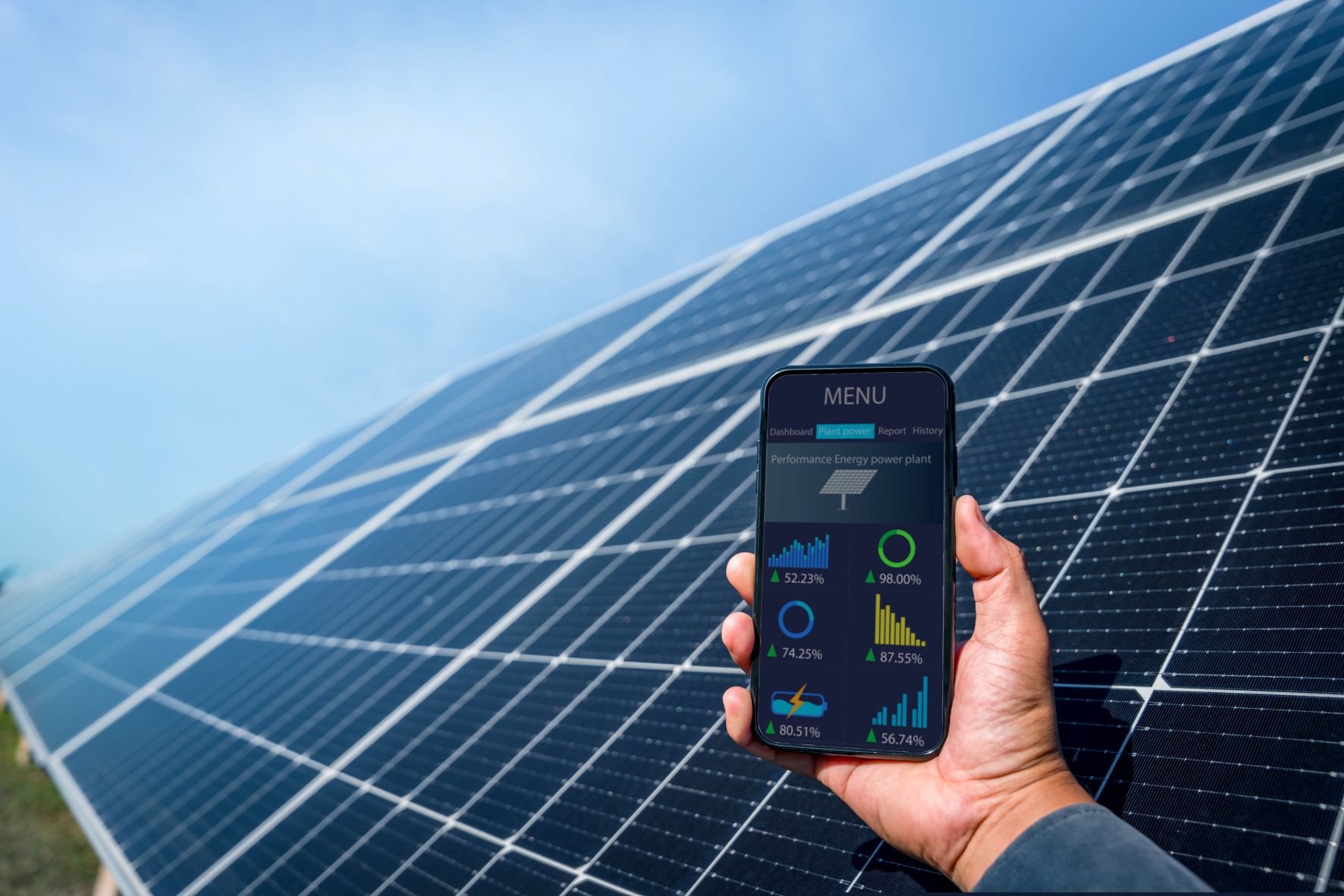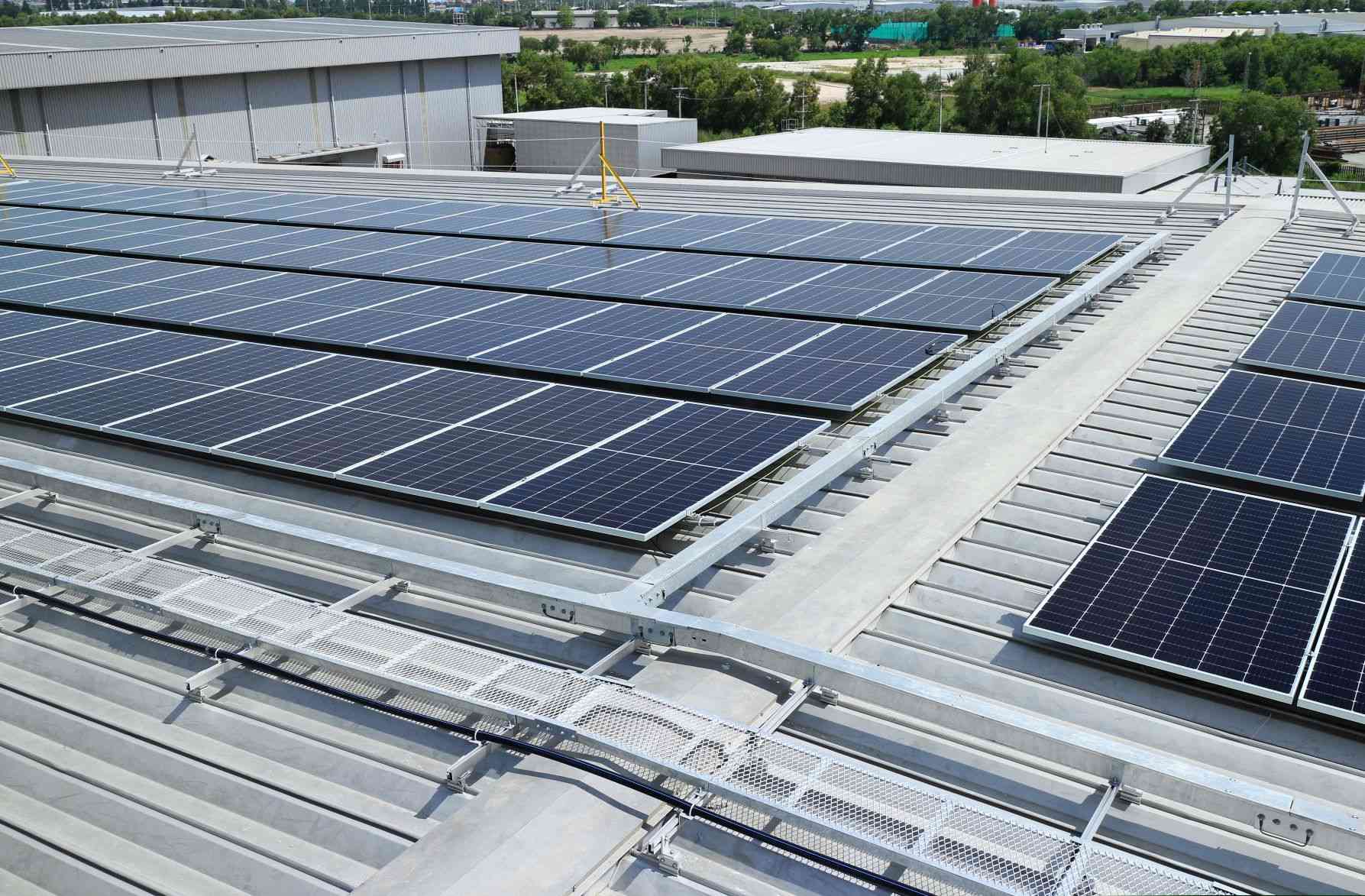Solar PV System Design
Reduce Your Energy Costs
A commercial solar system can generate electricity for over 25 years, saving thousands of dollars in energy bills each year.
Lower Your GHG Emissions
Solar panels produce zero emissions when generating power, reducing the environmental footprint of your building.
Qualify for Financial Incentives
Get a professional solar PV system design and qualify for financial incentives such as tax credits, grants and low-interest loans.
Benefits of a Commercial Solar PV System

Under favorable sunlight conditions, a 100-kilowatt solar array can generate more than 140,000 kilowatt-hours per year. In a building with an electricity tariff of 20 cents/kWh, this is equivalent to around $28,000 in annual power bill savings. As the rated capacity of your commercial solar system increases, your savings grow in the same proportion. Large solar arrays also benefit from economies of scale:
- The unit price of a residential or small business solar PV system is typically above $3,000 per kilowatt of capacity.
- Medium-sized commercial installations can reach prices below $2,000 per kW.
- The largest commercial, industrial and utility-scale solar arrays reach prices below $1,000 per kW.
Solar panels have a modular design that can adapt to many types of surfaces and project locations. At NY Engineers we offer commercial solar array designs in any configuration:
- Rooftop
- Ground mount
- Canopy
- Carport
Commercial solar arrays are also characterized by their long service life and durability. High-quality PV modules now come with a 25-30 year warranty, while their payback period can be less than six years. The financial outlook is even better when your project qualifies for solar incentives:
- The combination of solar grants and low-interest loans can reduce upfront costs to zero.
- The monthly savings achieved by a commercial solar array are typically much higher than loan payments, for the first month of operation.
If your building is located in a jurisdiction with climate mandates, a commercial solar array can also help you with compliance. Consider the case of New York City, where solar power can help you meet several local laws:
- Lowering the energy consumption reported under Local Law 84 of 2009
- Improving your building energy grade under Local Law 33 of 2018
- Meeting the green roof mandate under Local Laws 92 & 94 of 2019
- Avoiding penalties for high emissions under Local Law 97 of 2019
Commercial solar arrays also offer a marketing advantage for real estate developers, attracting tenants who are concerned about energy expenses. US electricity prices increased drastically between 2021 and 2022, and onsite renewable generation provides added value for tenants.
Advantages of a Professional Solar PV System Design

One of the main benefits of working with a professional design firm like NY Engineers is getting a quick project approval with local authorities and utility companies:
- Local construction code compliance
- Environmental compliance
- Grid interconnection compliance
Commercial solar projects are subject to NYC DOB Construction Codes if located in New York City, and New York State Uniform Building Codes if located in other jurisdictions. Environmental requirements include the NY State Environmental Quality Review (SEQR) if a solar PV project covers more than 10 acres, or 2.5 acres if located in an agricultural district.
Solar PV systems larger than 50 kW normally require a Coordinated Electric System Interconnection Review (CESIR), which analyzes their impact on the grid. Your solar PV design must also consider the specific interconnection requirements of the local utility company:
- Central Hudson Gas & Electric
- Consolidated Edison
- National Grid
- New York State Electric & Gas (NYSEG)
- Orange & Rockland Utilities
- PSEG Long Island
- Rochester Gas & Electric
There may be additional permitting requirements, depending on the location of a commercial solar array and the Authority Having Jurisdiction (AHJ). The list of requirements can seem long and challenging, but they are not an issue for an experienced design firm like NY Engineers.
With a quick design and permitting process, your commercial solar design can also qualify for financial incentive programs earlier. These programs often offer better incentives for first movers, and the benefits are gradually reduced as more projects get approved. There are also solar incentive programs with very limited funding - getting your project designed and approved quickly is critical if you want to qualify.
NY Engineers will conduct an inspection of your electrical installations and roof structure, to identify if any upgrades are needed before installing a solar array. Any required modifications are submitted for approval along with the commercial solar PV design, ensuring there are no delays during the construction stage. Our design engineers will determine the ideal solar array layout, while specifying a suitable racking system based on your roof material and slope.
A professional design also increases the ROI of a commercial solar array. We will determine the optimal system capacity that maximizes electricity output and savings with respect to cost. Our commercial solar design process includes:
- Photovoltaic module and inverter selection
- Optimal solar array capacity and string circuit distribution
- Solar PV simulation and feasibility study
- Electrical and structural balance-of-system
New York State has 1,607 municipalities, and any commercial solar project must be approved by the Authority Having Jurisdiction (AHJ). Depending on project location, the AHJ can also be a state organization instead of a municipal government. NY Engineers can manage any town board approvals and utility interconnection permits that apply for your project.
Commercial Solar Power + Energy Storage System Design
By itself, a commercial solar array can consistently lower your electricity bills during 25 years or more. However, an energy storage system offers additional functions and potentially higher savings. The benefits of commercial-scale energy storage include:
- Reducing electricity consumption peaks and their corresponding demand charges.
- Backup power during electric service interruptions.
- Being able to accumulate solar electricity during the day, and use it at any time.
Depending on where your building is located, a commercial solar+storage system may also be eligible to participate in a virtual power plant (VPP). In a VPP, distributed energy resources (DER) are managed directly by the utility company with the goal of improving the electric service, and DER owners get financial incentives in return.
Thanks to the Inflation Reduction Act passed in August 2022, energy storage systems now qualify for a 30% federal tax credit. Previously, only storage systems getting at least 75% of their charge from solar panels would qualify, and this greatly limited their commercial applications.
- This requirement has now been removed, and energy storage systems now qualify regardless of the electricity source.
- Building owners can now charge storage systems with grid electricity at times when solar panels are not productive, without missing out on the federal tax credit.
Get In Touch
Qualifying for Solar Power and Energy Storage Incentives
Commercial solar + storage projects can offer a much higher ROI if you qualify for financial incentives. Thanks to the Inflation Reduction Act, there is now a 30% federal tax credit for both solar arrays and energy storage systems. The federal tax incentive applies for both technologies regardless of how they are used - combined or as stand-alone projects.
The financial outlook for a commercial solar project improves when local incentives are added to the federal tax credit, and NYSERDA offers generous incentive programs in New York State:
NYSERDA also manages the NY Green Bank, which has provided over $1.7 billion in funding for projects that reduce greenhouse gas emissions in New York State. The types of projects eligible for NY Green Bank loans include clean energy generation and clean energy storage. Other eligible project categories include energy efficiency, clean transportation, sustainable agriculture, and sustainable water infrastructure.
NY Engineers can manage any incentive applications associated with your commercial solar project, qualifying for grants and financing.
NY-Sun Megawatt Block Program
The MW Block Program is divided into three regions: Con Edison service territory, Long Island, and Upstate NY.
- As of October 2022, the program is offering solar rebates in the Con Edison and Upstate NY regions.
- Funding has been depleted in the Long Island region, but this could change in the future.
- NYSERDA has real-time program dashboards where you can check the availability of funds for each region, and also the exact incentive rate per watt.
NYSERDA incentives are available for solar PV systems of all sizes, but the exact incentive rate varies depending on the market segment. In general, projects are divided into three categories: residential, nonresidential, and large commercial or industrial. A commercial solar project can fall in the nonresidential or large commercial category.
Community solar projects qualify for additional incentives from the MW Block Program. However, a commercial PV array must meet certain requirements to be classified as community solar:
- Having at least 10 subscribers, and each must receive at least 1,000 kWh per year.
- Community solar projects in multifamily buildings can have less than 10 subscribers.
- Large subscribers having a demand of over 25 kW cannot use more than 40% of the electricity generated.
NYSERDA’s NY-Sun Initiative has the goal of deploying 6 gigawatts (GW) of solar PV capacity throughout New York State by 2025, and the MW Block Program is aligned with this target. NY-Sun incentives are available for both roof-mounted and ground-mounted solar projects.
Retail Energy Storage Incentive Program
New commercial solar + storage projects up to 5 megawatts (MW) of capacity can qualify for an additional incentive from NYSERDA. To be eligible, the installation must be permanent and stationary. The program is available for various energy storage technologies, as long as they are capable of shifting renewable generation to hours that are more favorable for the utility company.
New York State has an ambitious energy storage target: deploying 1,500 MW of capacity by 2025 and 3,000 MW by 2030. Having this energy storage capacity, the state could achieve $3 billion in economic benefits while avoiding two million metric tons of CO2 emissions.


